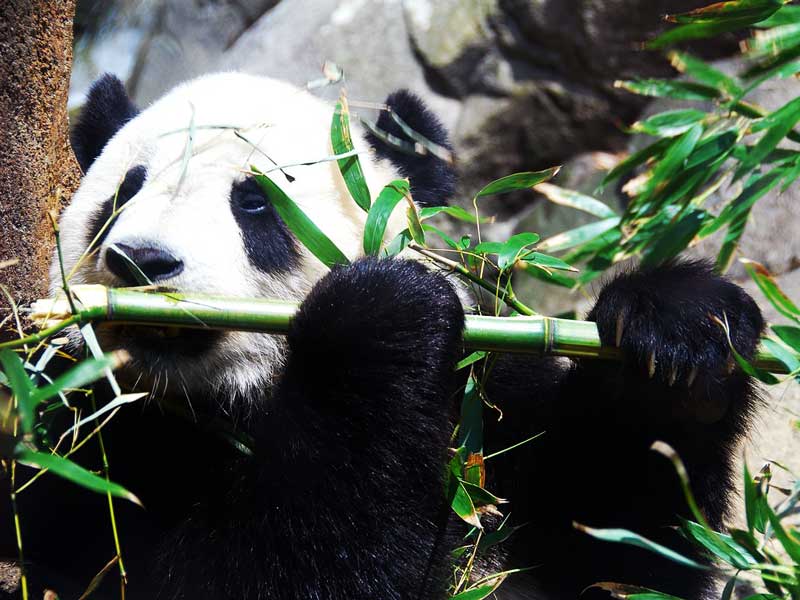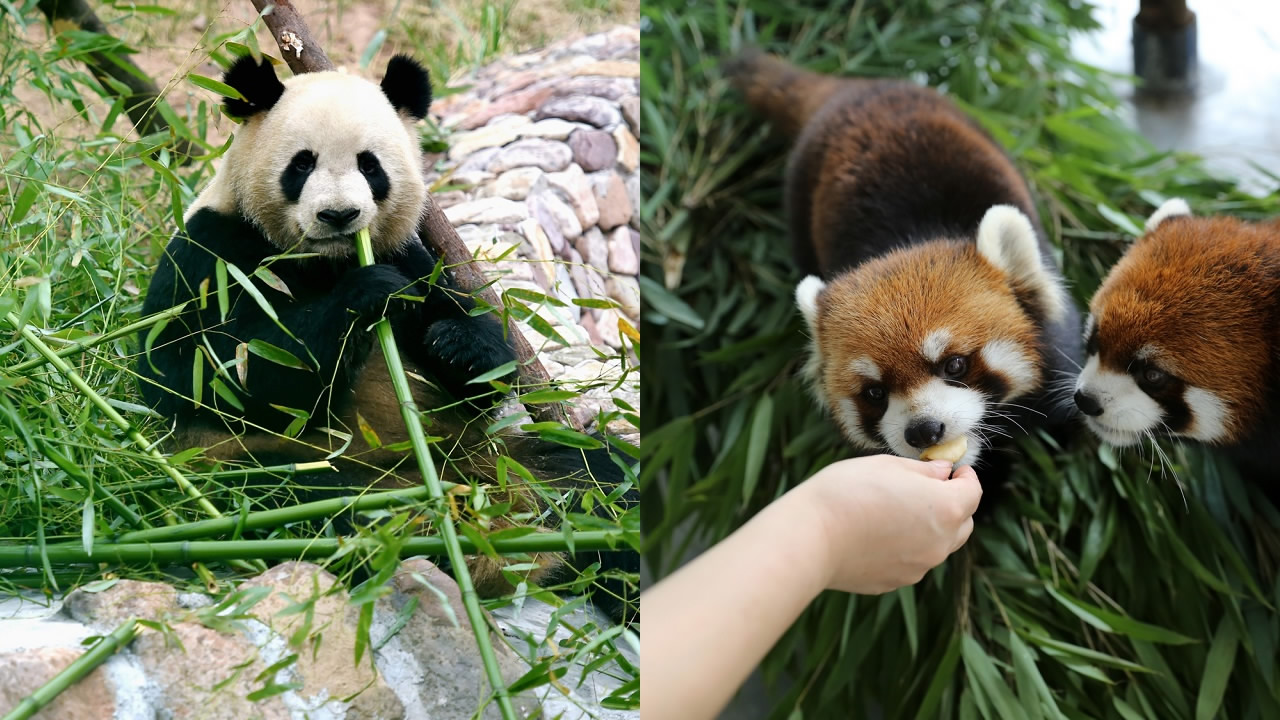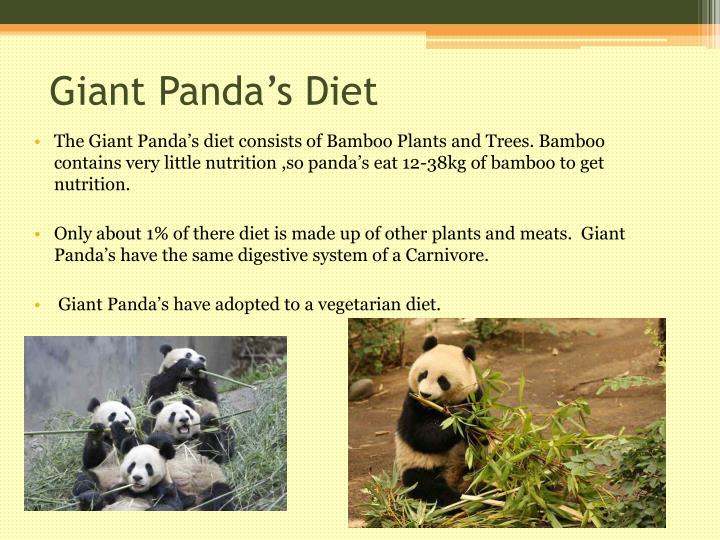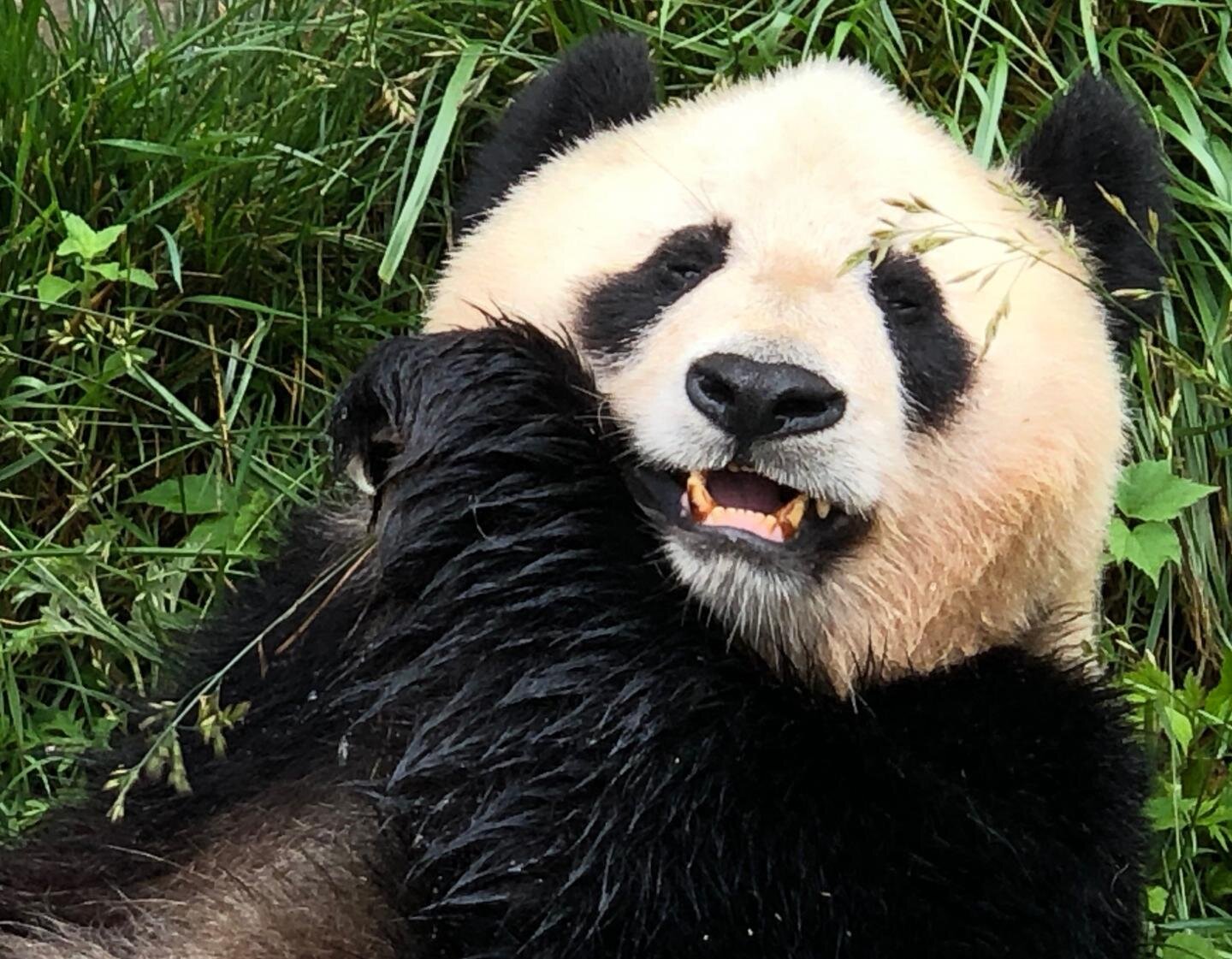
Red Panda Fact Sheet Infographic 2 Panda habitat, Red panda cute, Red panda
1 ]. Today, giant pandas exclusively consume bamboo and have distinctive tooth, skull, and muscle characteristics adapted to a tough and fibrous bamboo diet during their long evolution [ 1 , 2 ]. A special feature, the pseudo-thumb, has evolved to permit the precise and efficient grasping of bamboo [ 3 , 4 ].

The giant panda’s unusual diet may be the result of human pressure Panda evolution
Today, giant pandas exclusively consume bamboo and have distinctive tooth, skull, and muscle characteristics adapted to a tough and fibrous bamboo diet during their long evolution [ 1, 2 ].

How pandas survive on their bambooonly diet Science AAAS
June 30, 2022 When is a thumb not a thumb? When it's an elongated wrist bone of the giant panda used to grasp bamboo. Through its long evolutionary history, the panda's hand never developed a truly opposable thumb and, instead, evolved a thumb-like digit from a wrist bone, the radial sesamoid.
:max_bytes(150000):strip_icc()/143732319-56a007c85f9b58eba4ae8e05.jpg)
Giant Panda Facts Behavior, Habitat, Diet
The ancestral panda Ailurarctos lufengensis, exca-vated from the late Miocene, is thought to be carniv-orous or omnivorous [1]. Today, giant pandas exclusively consume bamboo and have distinctive tooth, skull, and muscle characteristics adapted to a tough and fibrous bamboo diet during their long evolution[1,2].Aspecialfeature,thepseudo-thumb,

Giant Panda Lifestyle + Habitat + Diet + Facts Science4Fun
Diet Evolution and Habitat Contraction of Giant Pandas via Stable Isotope Analysis The ancestral panda Ailurarctos lufengensis, excavated from the late Miocene, is thought to be carnivorous or omnivorous [1].

What do Pandas Eat In the Wild and In Captivity Pandas Diet YouTube
Both the giant panda ( Ailuropoda melanoleuca) and red panda ( Ailurus fulgens) belong to Carnivora and have developed similar adaptations to the same dietary switch to bamboos at the morphological and genomic levels. However, the genetic adaptation at the gene expression level is unclear.

Everything you need to know about baby pandas, in one chart The Washington Post
The creature ate a similar diet to modern giant pandas, suggesting their unusual bamboo-chewing lifestyle has survived through evolutionary time. The finding also adds to the evidence that.
:max_bytes(150000):strip_icc()/red-panda-eating-470203225-5b57681646e0fb005ad12141.jpg)
Red Panda Facts Behavior, Habitat, Diet
Dec. 16, 2023, 5:54 AM ET (MSN) Giant Panda Enjoys Snow at Beijing Zoo Geographic ranges of living species of bears Geographic ranges of the eight living species of bears. giant panda, ( Ailuropoda melanoleuca ), bear with striking black-and-white coloration inhabiting bamboo forests in the mountains of central China.

What Do Giant Pandas Eat a Guide to Panda's Diet
Firstly, Han et al. (2019) demonstrate a contraction and shift in the giant panda's range, diet and habitat use that has occurred over the past 3,500 years, showing that the giant panda's.

Why did giant pandas and red pandas both evolve to eat bamboo? CGTN
The panda's transition from a broad, omnivorous diet to a highly specialized bamboo diet necessitated multiple changes in anatomy and physiology, as well as their genetics underpinning 45,46,47.

PPT Giant Panda PowerPoint Presentation ID2136408
• 11 min read Where do giant pandas come from? Of course, the proximal answer involves a male and female panda - and maybe some panda porn, if life in captivity dampens the mood - but I'm not.

What Do Giant Pandas Eat a Guide to Panda's Diet BestofPanda
Through the processes of natural selection, the giant panda's dietary preference has strongly impacted the evolution of its teeth and jaws. Researchers have solved the mystery of how the giant.

Panda Fact Sheet Blog Nature PBS
Taxonomy Classification For many decades, the precise taxonomic classification of the giant panda was under debate because it shares characteristics with both bears and raccoons. [17] However in 1985, molecular studies indicate the giant panda is a true bear, part of the family Ursidae.

The evolution of the giant panda's temporomandibular joint and premolar teeth enabled adaptation
Dietary Evolution: The Panda Paradox Giant pandas are specialized herbivores that digest little of the bamboo they consume. A new study argues that pandas, like carnivores, get most of their energy from protein, explaining their carnivore-like guts and poor digestion. This may have facilitated their ancestors' transition to herbivory. Main Text

What Do Pandas Eat? Facts about the Diet of a Panda
The giant panda (Ailuropoda melanoleuca) is one of the world's most endangered mammals and remains threatened by environmental and anthropogenic pressure.It is commonly argued that giant pandas are an evolutionary cul-de-sac because of their specialized bamboo diet, phylogenetic changes in body size, small population, low genetic diversity, and low reproductive rate.

What do PANDAS eat? 🐼 All about the Panda Bear Diet! YouTube
Research suggested that the bears made the switch to bamboo millions of years ago, but a study 1 now challenges this idea, proposing that the iconic creature went on its restrictive diet much.